Kraków 2022-01-06
Railway station Kraków Swoszowice.
The Kraków Swoszowice railway station was launched on August 1, 1884, simultaneously with the opening of the Kraków Płaszów (then Podgórze) - Sucha Beskidzka (then Sucha) railway route. The trail was part of the Galician Transversal Railway, which was to meet the needs of Austria-Hungary. Poland was then under partitions.
However, it is very likely that construction work on the railway line in Swoszowice started in 1876. The railway line was needed for the Liban Quarry and for the SOLVAY factory under construction. The Swoszowice railway station was also built for the needs of patients who used the Swoszowice Health Resort.
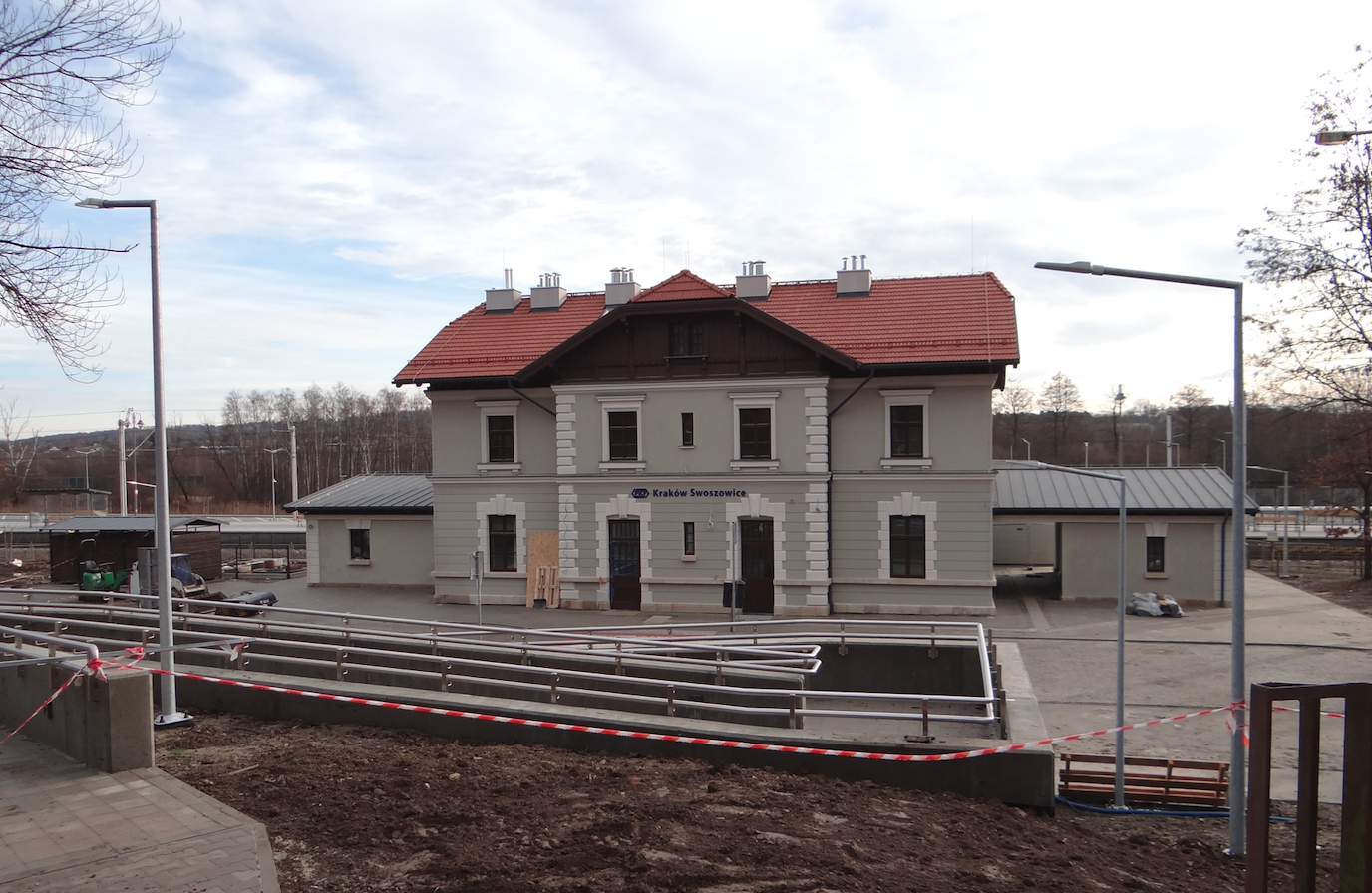
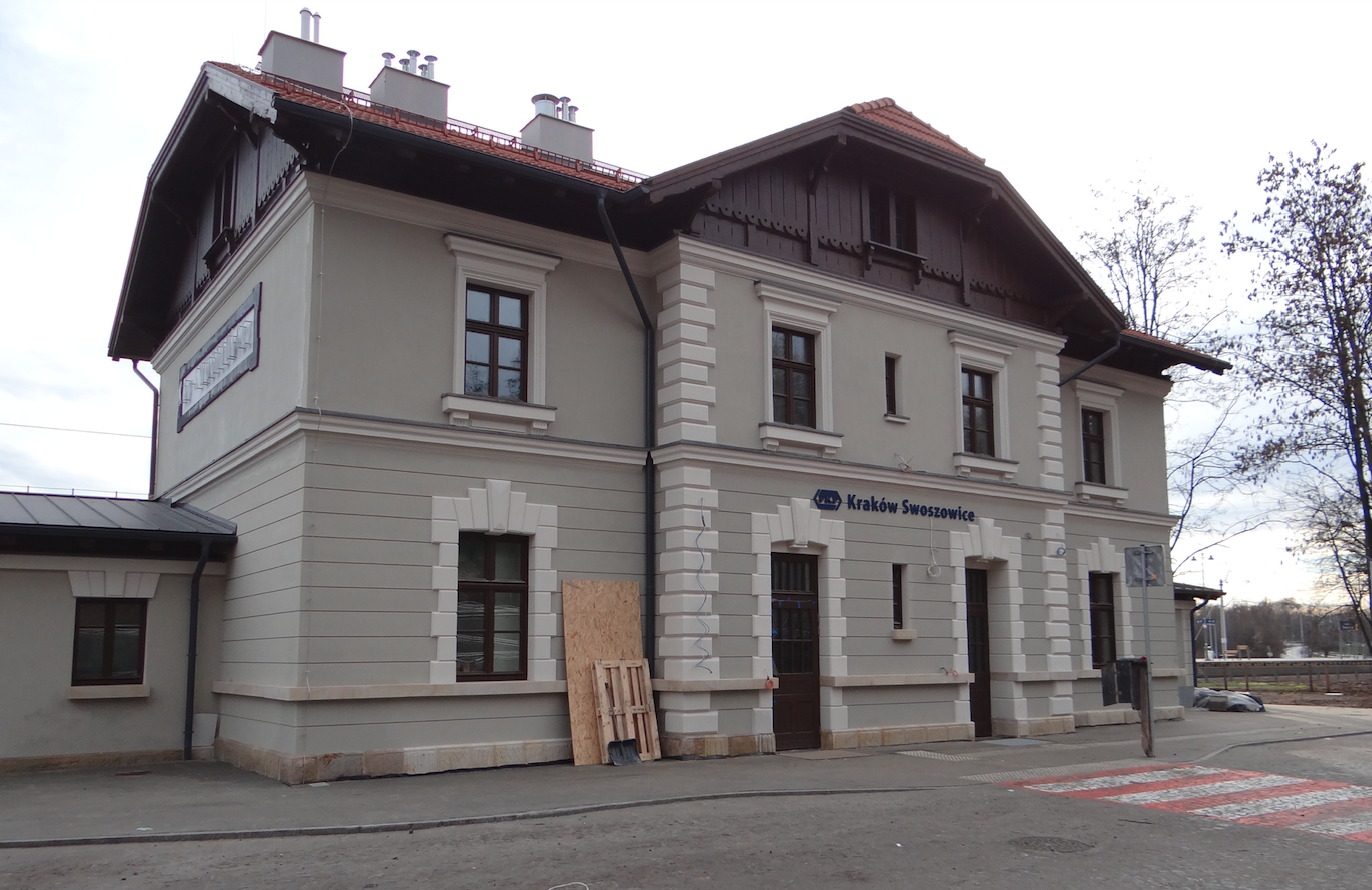
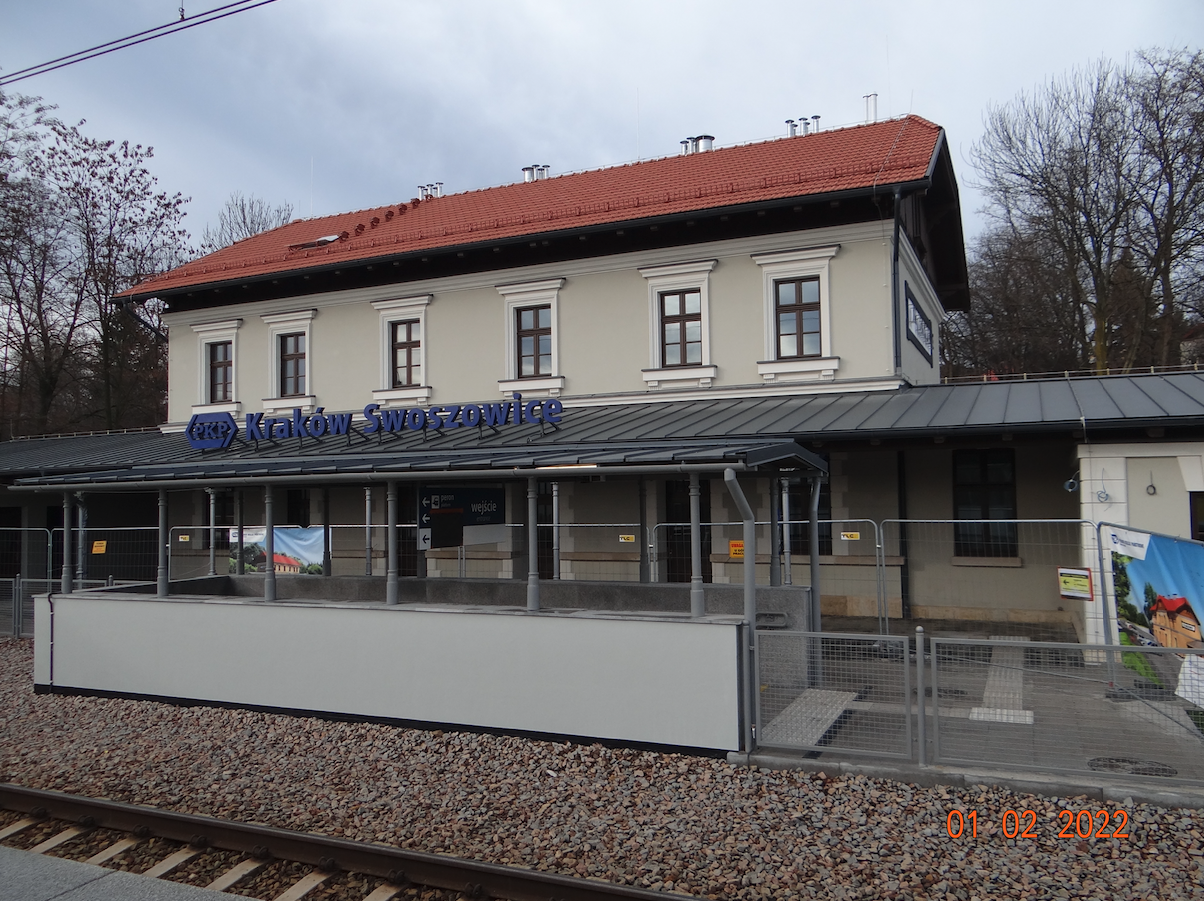
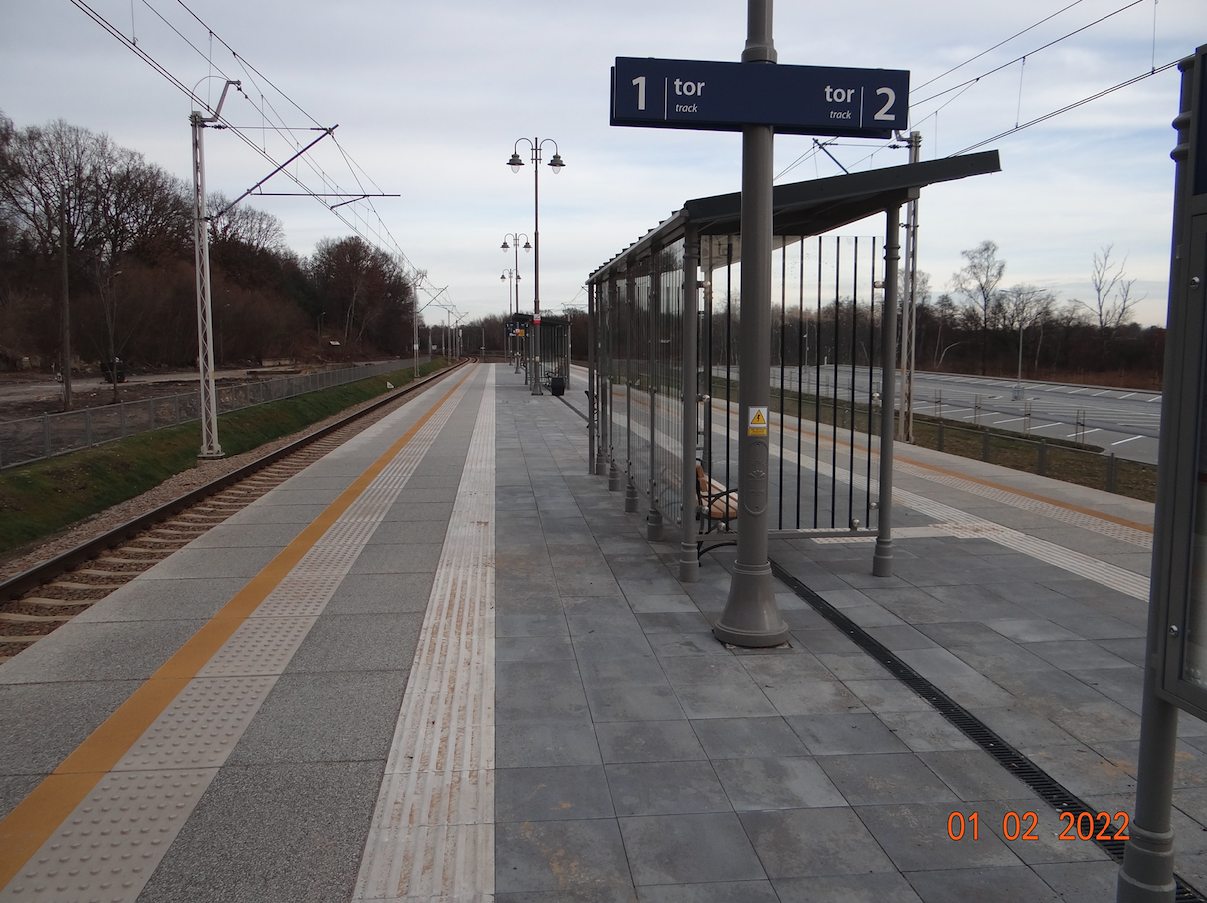
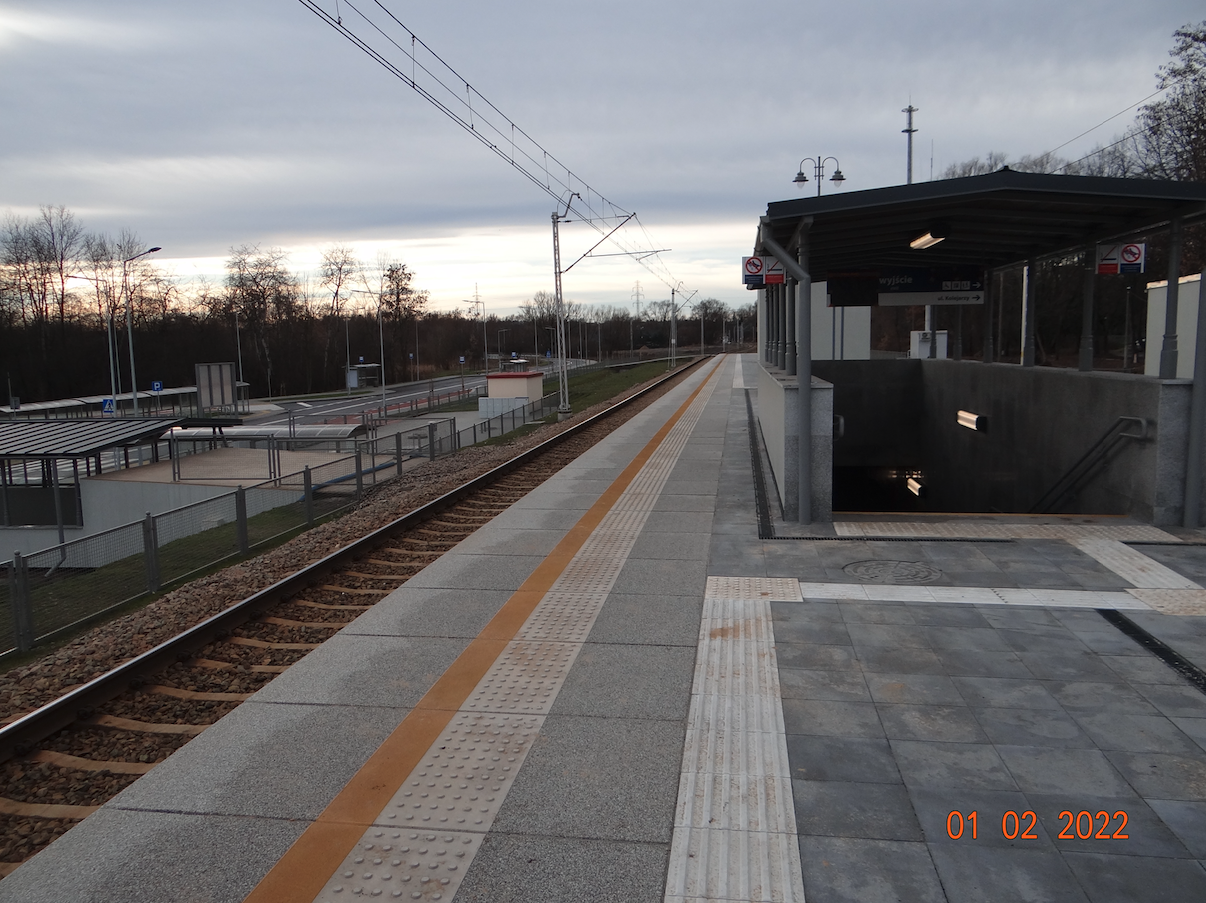
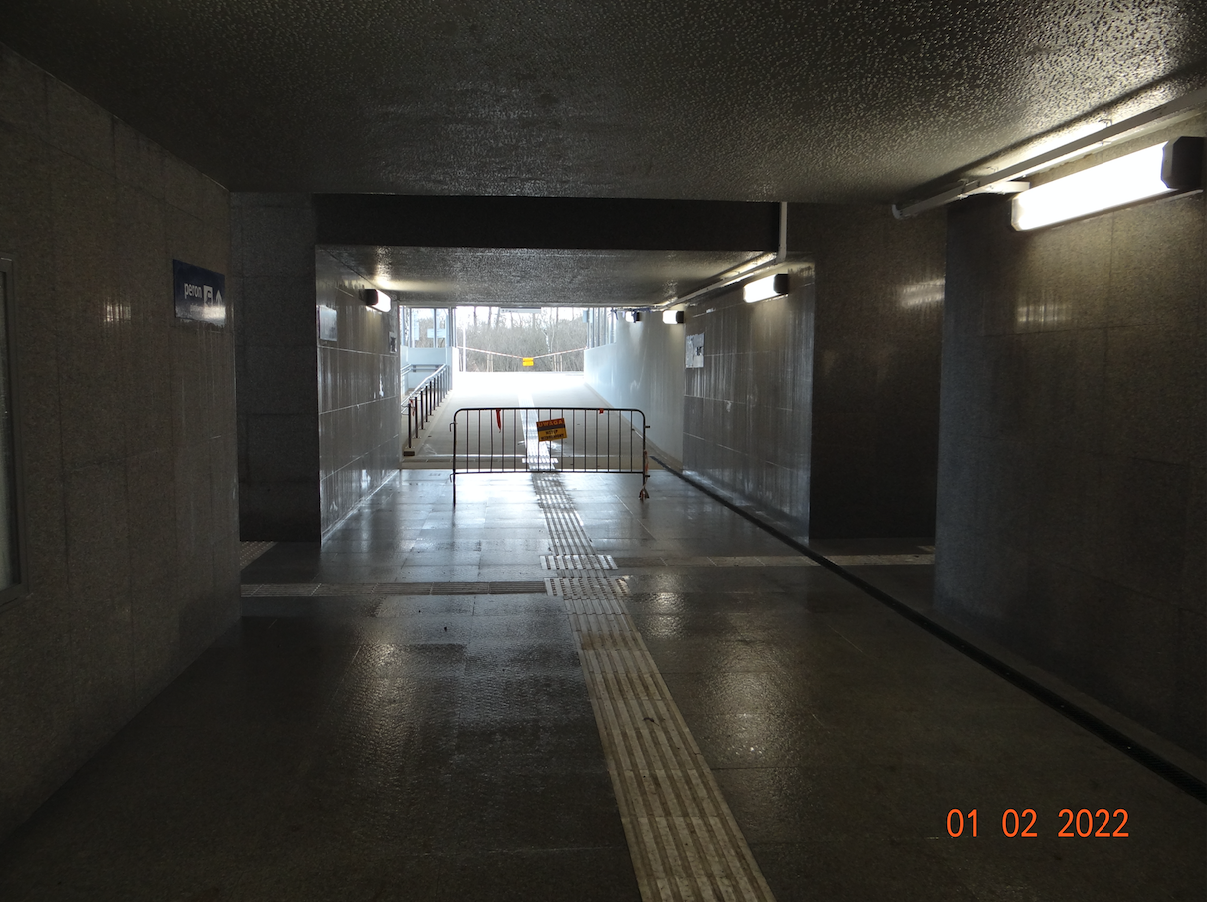
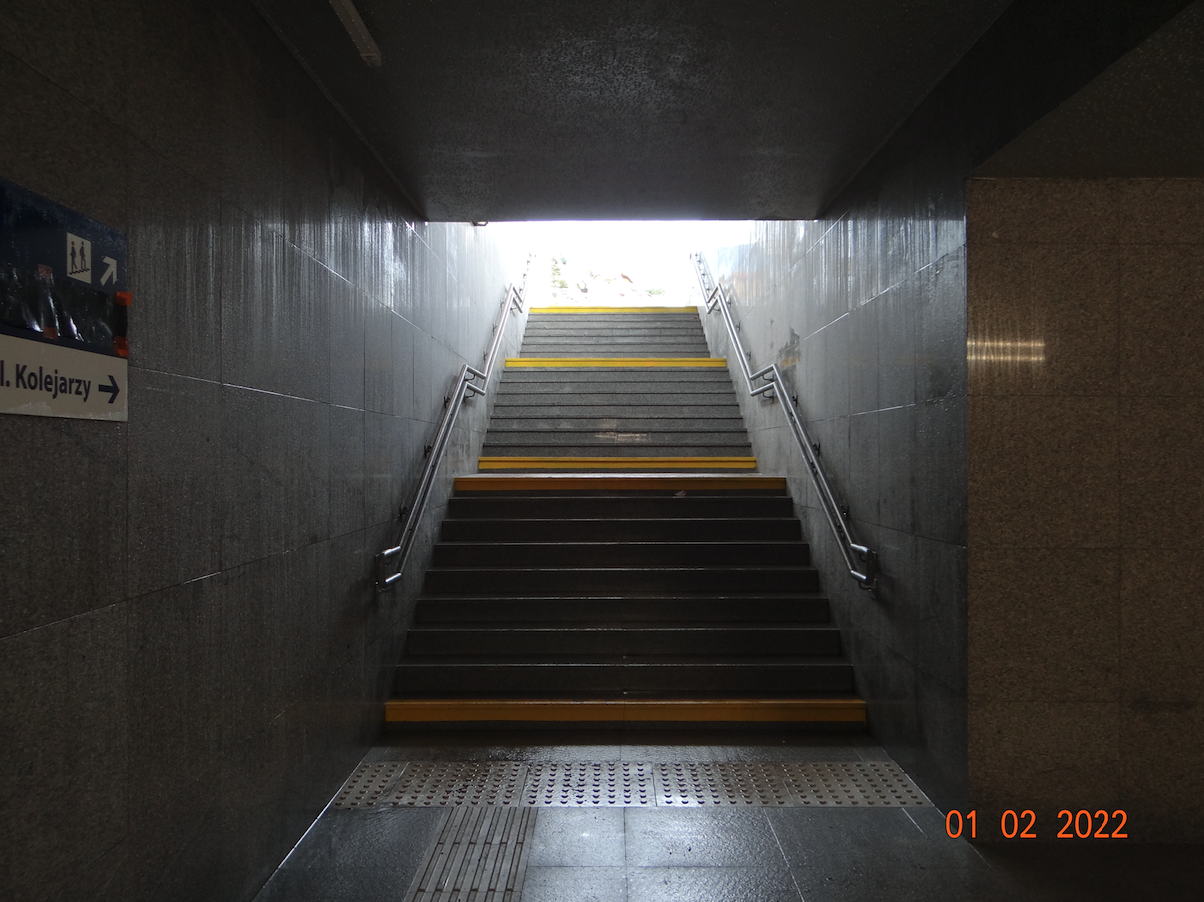
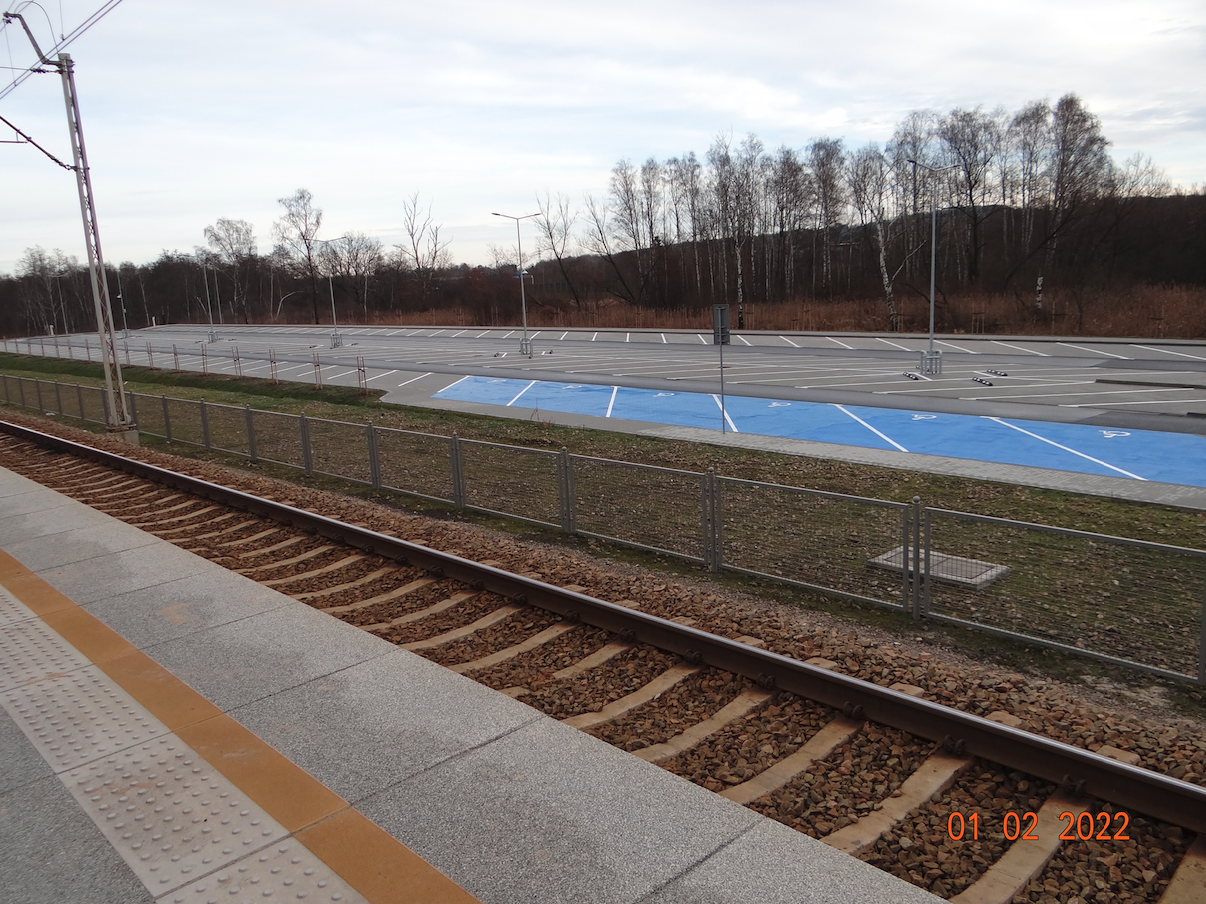
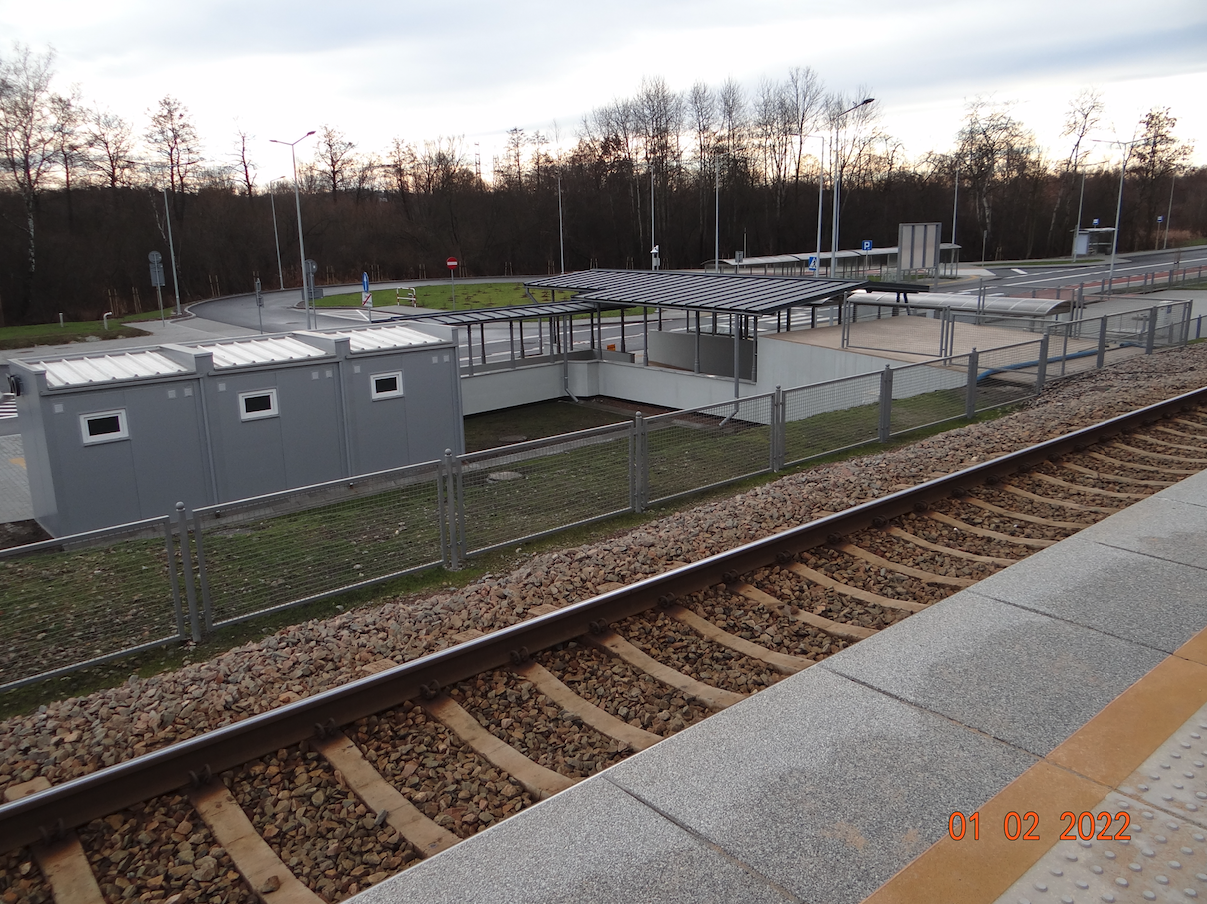
The town of Swoszowice.
The name Swoszowice derives from the founder of the village, i.e. a knight named Swosz, de Swoszowice. Therefore, the village of Swoszowice was a knight's property. The first mentions of Swoszowice, a Subcarpathian village near Kraków, are found in the Tyniec Code of 1362. The Swoszowice health resort has existed since 1811. However, sulfur mines already existed here in the Middle Ages. which brought considerable profits to the Kingdom Treasury. Traces of sulfur mines still exist in the form of pits and heaps. Already in the 15th century, the healing properties of sulphated waters were noticed.
Sulfur deposits in Swoszowice were discovered in 1422, when firearms came into use, and sulfur was an important raw material for the production of gunpowder. The discoverer of sulfur was a miner named Krystyn. The townspeople of Kraków became interested in sulfur, and they had high shares in the mines. The rights to the mines were also claimed by the Convent of Regular Lateran Canons at ul. Boga Ciała in Kraków, to which Swoszowice belonged. Swoszowice belonged to the Canons Regular until the first partition of Poland, 1772. Sulfur mining in Swoszowice ceased in 1888 due to the depletion of the deposit. Even during the Great World War, the Austrians made attempts to exploit the remains of the deposit.
It was noticed early on that the wealth of Swoszowice was also sulphate springs. In 1578, the first medical publications describing the treatment centers for the effects of sulphates in rheumatic diseases were published. In 1795, the owners of Swoszowice "smelled the business that smelled of rotten eggs". They built the first simple clay baths and guest houses. In 1807, Swoszowice was bought by a professor of the Jagiellonian University, Feliks Radwański. He built the spa house "Łazienki", to which water was supplied through wooden gutters, installed spa facilities and erected several buildings for guest accommodation. From 1811, Swoszowice officially had a health resort. In 1815, a spa park was established. Patients had at their disposal: a restaurant, music concerts, theater performances, billiards, bowling, dancing. In 1831, due to the November Uprising, the health resort fell into decline in Swoszowice. In 1859, a doctor, politician, professor Józef Dietl led the health resort to flourish again. New and modern buildings were built: "Łazienki", a summer house, a restaurant, and playrooms. A permanent line of a horse-drawn omnibus was organized from Kraków to Swoszowice, which ran three times a day.
In 1875, a railway line was brought to Swoszowice, from the Bonarka station. The station building was built around 1880 - 1884.
At the end of the 19th century, the Austrians built Fort Swoszowice, which was part of the fortified ring of the city of Krakow. This fort was built to the east of the spa, in the period 1897 - 1898. Currently (2021) it houses the Fort 51 Military Museum "Wróblowice".
The health resort developed dynamically until 1914. With the outbreak of the Great World War, the spa was devastated. The Austrians once again tried to find sulfur deposits, but to no avail. Swoszowice railway station has avoided destruction. As early as November 1918, the reconstruction of the health resort in Swoszowice began, which was carried out in stages. In 1939, the German army invaded Poland. During the occupation, the enemy expanded "Baths". In 1945, after the Second World War, the spa was nationalized. From 1950, scientific analyzes of the waters occurring in Swoszowice were carried out. The research work was conducted by the Balneological Institute in Szczawno Zdrój and the Jagiellonian University in Kraków. Drills made in the area, including in the town of Lusina, confirmed the existence of other mineral water deposits.
In 1973, Swoszowice was incorporated into the administrative boundaries of the city of Krakow. Therefore, the State Enterprise "Zespół Uzdrowisk Krakowskich" was established, and in 1974, Swoszowice received the rank of a health resort. In 1999, Zespół Uzdrowisk Krakowskie was transformed into a joint-stock company with 100% share of the State Treasury. In 2010, the health resort was privatized. In 2011, the health resort celebrated its 200th anniversary. The spa park covers an area of 7 hectares.
Krakow Swoszowice station.
The Kraków Swoszowice station is located in the southern part of Kraków. It is about 9.0 km to the center of Krakow. Coordinates of the Kraków Swoszowice railway station 50 ° 00′02 ″ N 9 ° 55′44 ″ E. The station is located at 7.09 km from the Kraków Płaszów station. The station is located 222 m above sea level.
The building of the railway station in Swoszowice was built around 1880. It was built as a typical Austrian two-story railway station with a multi-plane roof. There is a ticket office and a waiting room on the ground floor. On the first floor there are apartments for railway families. The toilets are located in a separate building adjacent to the main building through a shared roof. A loading yard and warehouses are located near the station building.
The final track layout at the Swoszowice station was as follows: Two main tracks of the line No. 94 Kraków Płaszów - Oświęcim. Two auxiliary tracks and one track for the unloading ramp without crossing. For passenger trains, there will be Platform 1 single-edge at the station building and Platform 2, an island, double-edge. However, most passenger trains stopped at Platform 2. Railroad workers did not set up freight trains on the track at Platform 1, because it made it impossible for passengers to reach Platform 2, because access to it was only through the tracks. There was no tunnel or footbridge for travelers. However, when a freight train had to be set up there, the railway workers unfastened the train at the crossing point. In 1995, the track at the station building was removed. There was still a track to the unloading ramp.
Platform 2 was of a low type, with an asphalt surface, partially lined with concrete tiles. There were three shelters on the platform, benches, litter bins and electric lighting on concrete poles. There were also loudspeakers for voice announcements and illuminated display cases with timetables. The boards with the word Kraków Swoszowice were of a showcase type with internal lighting. Railroad workers systematically cleaned the weedy tracks.
Railway traffic at the Swoszowice station was directed from two control rooms located in the station heads. Control unit KS1 (ex Sw1) and control unit KS (ex Sw). The railway crossing along Kąpielowa Street was also served from the control room. Currently (2021), the station is served by the control room located at the Kraków Bonarka station and a modern computer system.
In 1970, the Kraków Płaszów - Skawina railway route and the Swoszowice station were electrified. At that time, shaped beacons were replaced with light ones.
In 1973, Swoszowice was incorporated into the city limits of Krakow and the station changed its name to Krakow Swoszowice.
In 1975, in connection with the renovation of Zakopianka Street, which received four lanes, also Kąpielowa Street, which leads directly to the Health Resort, was renovated. The rail-road crossing was left at one level, although it was planned to build a road viaduct over the tracks.
In 1995, the A4 motorway was built between the railway station and the health resort, which is the bypass of Krakow from the southern side of the city. Together with this investment, Kąpielowa Street was led over the viaduct over the motorway and over the Wilga River.
In 2000, the ticket office and the waiting room were closed. Due to the devastation of the building by vandals, all entrances were permanently closed except for the entrance to the staircase for the residents of the upper floor.
In 2018, there was an initiative of the residents to rename the stop to Kraków Jugowice, which was argued by the administrative location of the station and plans to create a Jugowice Culture Club there. The relevant application was rejected by PKP PLK due to the fact that the current name denotes a larger territorial unit, which, unlike the name Kraków Jugowice, is commonly known to passengers. Besides, the name Swoszowice is already a historical name.
In 2018, the station served up to 30 passengers a day.
In 2022, a passenger stop served trains from the Krakow agglomeration - Koleje Małopolskie and POLREGIO trains. Koleje Małopolskie runs through Swoszowice passenger trains on the line SKA2 Kraków Główny / Kraków Podgórze - Skawina. POLREGIO runs passenger trains from Kraków to Zakopane, Sucha Beskidzka, Chabówka, Oświęcim and Bielsko Biała. The station served about 100 passengers a day. IntetCity trains, which did not stop here, also passed through the stop.
Renovation of the Kraków Swoszowice station.
In 2019, the renovation of the Kraków Swoszowice station was started. It was related to the renovation of the railway line No. 94 on the section Kraków Płaszów - Podbory Skawińskie, and this work was part of the grand modernization plan for the Kraków railway junction. At the Karków Swoszowice station, work was divided into three separate tasks. The first task; renovation of the track system and traffic control devices. Second task; reconstruction of the station, construction of a new island platform, Platform 1, tunnel for travelers, parking lot, bus stop and a new street on the eastern side of the station. Third task; general renovation of the station building.
It is true that the station has only become a personal stop, but it has become a transfer junction with the Park & Ride car park. The passenger stop in Swoszowice has been modernized thanks to the cooperation of PKP PLK and the Krakow local government. The construction of the transfer junction began in September 2020. Due to heavy rains, the works had to be suspended, which translated into the opening of the investment at a later date.
Unfortunately, there was not enough funds to build a road viaduct over the tracks along Kąpielowa Street. In addition, the analyzes carried out by PKP PLK did not indicate any major difficulties in the movement of public and bus transport.
A modern island platform 1 with a modern non-slip surface was built. There are paths for the blind and safety lines on the surface. There are shelters for travelers and an information system in showcases. There is no sound system, and therefore no voice messages. The Swoszowice station is now accessible to the disabled. The platform is illuminated with 19th century lanterns. Benches and resting places for travelers look similar. A tunnel for travelers has been built under the platform and tracks. There are stairs and an elevator to the tunnel on the platform and from the side of the building, and there is a small ramp from the car park (eastern side), because there is a difference in the height of the terrain. Platform 1 is 0.60 m high and 200 m long.
The car park for passenger cars has 200 parking spaces, including 6 for disabled people. There are 6 electric car charging stations in the parking lot. The parking lot is illuminated. There are three container toilets for travelers at the parking lot. Here there is an exit from the tunnel for travelers and a large loop for public buses with stops and shelters to protect passengers from wind and rain.
The opening of the Krakow Swoszowice passenger stop after a general renovation took place on November 7, 2021.
Railway station building.
Works on the main building lasted until spring 2022. Thanks to the investment, the building from around 1880 regained its historical beauty and was adapted to modern requirements, construction and fire regulations. At the very beginning, the roof was completely replaced, the structure of which was significantly degraded. The door and window woodwork was replaced in the style of the historical one. Dampproof insulation was made. New ceilings were strengthened and made.
The passenger service function has been restored at the station. On the ground floor there are commercial rooms, public toilets and a hall that also serves as a waiting room. There are seats in the waiting room and electronic information for the vain. There is a special map for the blind in the waiting room. The entire facility is equipped with a monitoring system (internal and external) as well as burglary and assault signaling.
In the former car park in front of the station, 15 stands for cars were made, three of which are for disabled people. There is also a small 19th-century architecture: benches, litter bins, lanterns, bicycle stands.
In general, the accessibility of the Kraków Swoszowice station has improved significantly. Currently (2022), the station can be accessed; along Kolejarzy Street, along the street next to the new car park and from Hubalczyki Street, from the square in front of the station by means of stairs and a ramp.
The contractor for the construction works was Zakład Remontowo-Budowlany MURDZA from Miechów.
Written by Karol Placha Hetman
